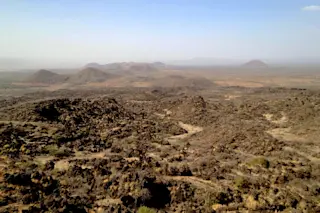The tiger life used to be relatively simple: They stalked around dining on deer or boar or fish or whatever else took their fancy, and took swims when they wanted to cool off. The solitary cats were the masters of their own fates, and when they encountered a stray human they could choose between mauling him and impressing the hell out of him with their majestic, haughty ways. It's not so simple anymore. The number of tigers in the wild has declined from more than 100,000 a century ago to about 4,000 left in scattered pockets around Asia today. Developing towns with bursting populations have encroached on tigers' habitats, reducing both their territory and their prey. The reverence that humans can't help feeling for the animals has also turned sour, as tigers are hunted by poachers who fuel the black market trade in tiger skins and body parts, many of which end up in traditional Chinese pharmacies. In response, the World Bank announced yesterday the launch of a Tiger Conservation Initiative that will try to bring wild tigers back from the brink of extinction. Many see it as a last ditch effort to save the big cat. "Just as with many of the other challenges of sustainability -- such as climate change, pandemic disease or poverty -- the crisis facing tigers overwhelms local capabilities and transcends national boundaries," World Bank President Robert Zoellick said at the launching at the National Zoo in Washington. "The decline in the numbers of tigers is shocking," Zoellick said, adding that because of poaching, tigers in many supposedly "secure" reserves across Asia had simply been wiped out. "Tigers are disappearing from Central Asia, and from East and South Asia," he said
[AFP].
An Indian conservation group called the International Tiger Coalition questioned the World Bank's moral right to conduct such a crusade, noting that the bank has funded road building and plantation projects in India that have decreased tiger habitats. But overall, the tiger-loving group sounded happy for the help. The International Tiger Coalition (ITC), an alliance of 39 organisations fighting for the long-term survival of tigers in the wild, said it was ready to help the Bank on its initiative. "Nothing short of global action will ensure the recovery of tigers in the wild," said Grace Ge Gabriel, spokesperson for the ITC and Asia Regional Director of the International Fund for Animal Welfare
As with any environmental cause, it can't hurt to have some Hollywood folks attached to the conservation project: Harrison Ford and Bo Derek both showed up at the zoo to promise their star-powered support. Meanwhile, the black market trade in tiger products continues to boom, as traditional Chinese medicine uses some tiger body parts as pain killers or aphrodisiacs. In one of the more disturbing developments, a British environmental group just announced that tigers may not be safe even in Chinese animal parks. The group's investigators say that park staff members offered to sell them "tiger bone wine," which is made from carcasses soaked in rice wine, and is believed to treat arthritis and rheumatism.
Staff said the wine was made from tigers that had died after fighting with other big cats at the venues. One park produced what they said was a government permit that allowed the sale of the tiger-derived wine on the premises, but the [...] researchers said it was not possible to verify whether the permit was genuine [BBC News].
China is party to the ban on international trade of endangered species (and their body parts), but Chinese authorities have raised the idea of lifting a parallel domestic ban in order to take tiger products from "tiger farms" where the animals are raised in captivity. They argued that this would prove to be the most sustainable option because it would satisfy the demand from traditional medicine practitioners without threatening the wild tiger population.
Although this approach was supported by some conservation groups, others warned that it would undermine efforts by the Chinese government to curb poaching. They said that it would be cheaper to kill a wild tiger than to rear a captive one, and it would be very difficult to tell the difference between the two [BBC News].
The World Bank has already published a report on the plight of tigers, and plans to hold a Year of the Tiger summit in 2010 to review its conservation efforts.
Image: flickr/dimitri_krendelev














